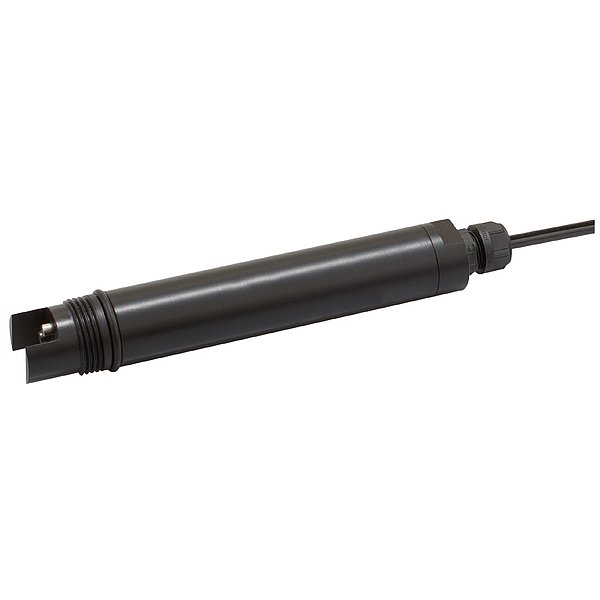Conductivity
Conductivity sensors are measuring devices that measure the ability of a measuring medium to conduct electric current between two electrodes. The current flows by ion transport. This means that measuring media with a higher number of ions conduct the current… Read more
| Measurement technology | Conductivity | |
| Measurement principle | Conductivity with two graphite electrodes | |
| Parameter | Conductivity | |
| Measurement range | 0.00 µS… 20000 µS | |
| Measurement accuracy | ±0.5 µS at 20 µS ± 5 µS at 200 µS ± 50 µS at 2000 µS ± 500 µS at 20000 µS | |
| Response time | T90 < 60s | |
| Temperature compensation | Via NTC | |
| Housing material | PVC housing, graphite electrodes | |
| Dimensions (L x Ø) | 220 mm x 33 mm | ~ 8.7“ x 1.3“ |
| Interface | RS485 (Modbus RTU) | |
| Power supply | 12…24 VDC | |
| Connection | 8-pin M12 connector, cable length 2 m or 10 m | |
| Maintenance interval | 2 years | |
| System compatibility | Modbus RTU | |
| Warranty | 1 year (EU & US: 2 years) on electronics; wear parts are excluded from the warranty | |
| Process pressure | 10 bar | ~ 145 psig |
| Calibration method | One-point calibration with standard measuring solution | |
| Process temperature | 0…50°C | ~ +32 °F to +122 °F |
Conductivity sensors are measuring devices that measure the ability of a measuring medium to conduct electric current between two electrodes. The current flows by ion transport. This means that measuring media with a higher number of ions conduct the current better.
A conductivity detector is used for digital measurements of conductivity in pure or process water.
-
D02-900en201912_brochure_Conductivity.pdf

